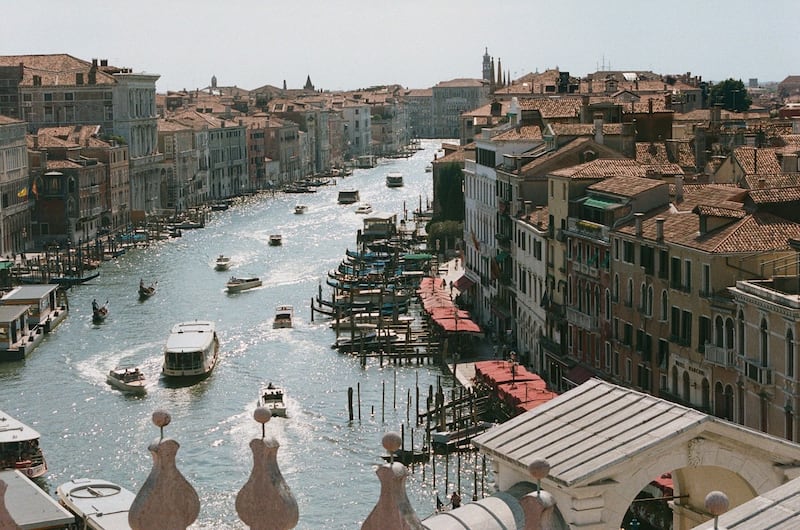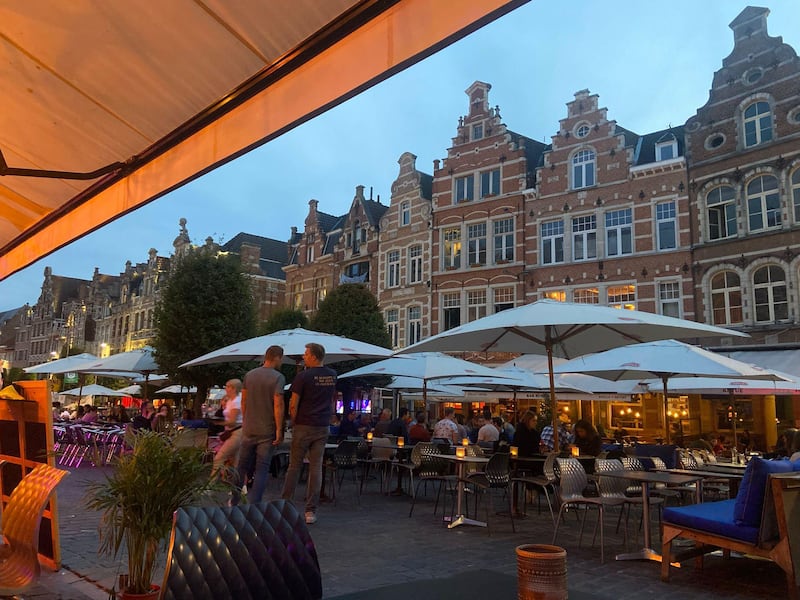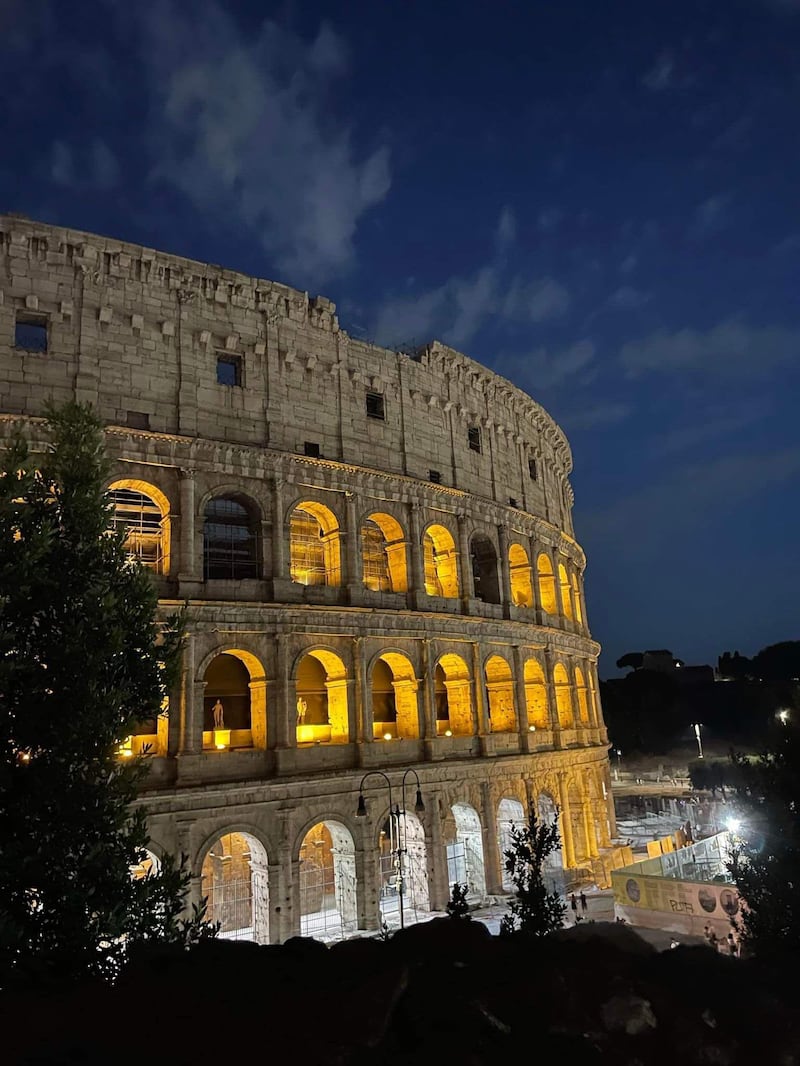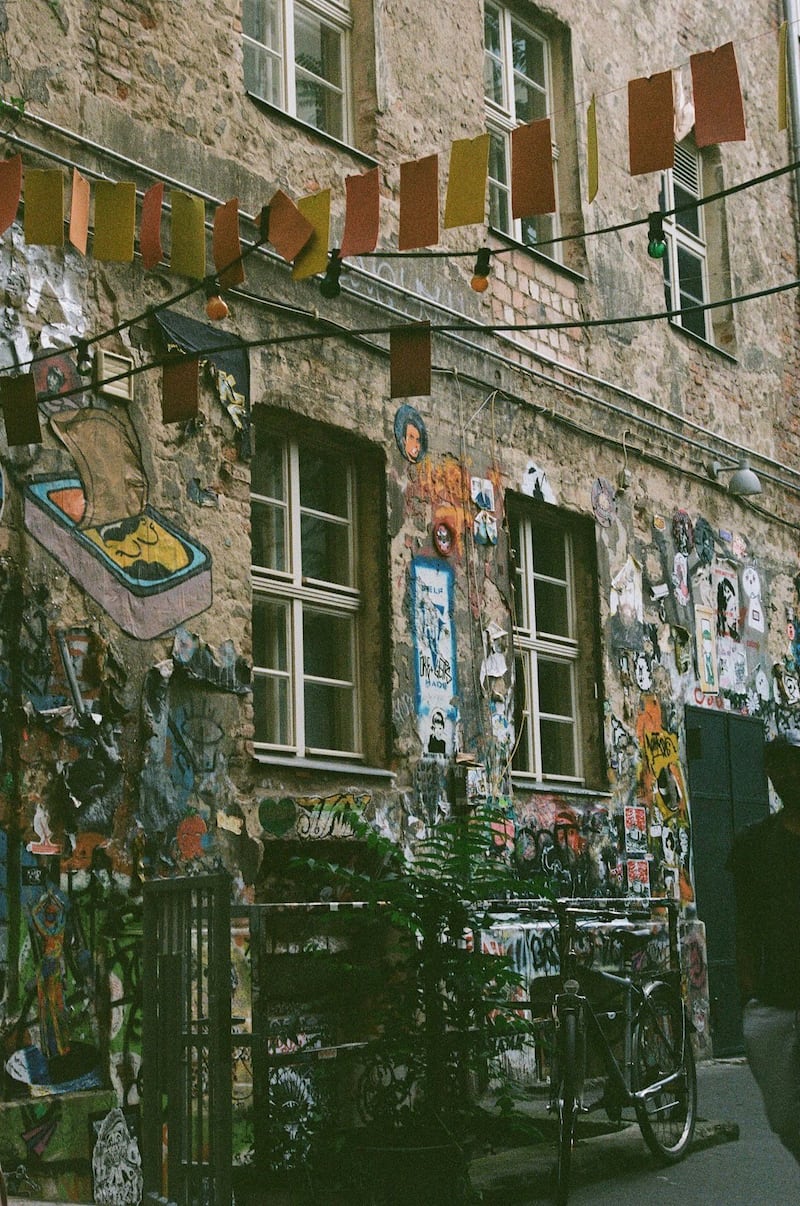After two years of staycations and the odd weekend away, my partner and I decided to make our summer holiday a big one. We had missed out on some important student experiences due to the pandemic. Some opportunities – like a college J1 – passed for good, but others just had to be postponed.
This inspired us to go Interrailing, which was always a bucket list trip for me. When I told people about the plan, most assumed we would be sleeping on train station floors or in crowded hostels. While many young people do decide to go that route (and if I had got to go while I was still a student, I would probably have been one of them), we – thanks to our full-time jobs – had the privilege of being a little more picky.
We began planning our route around our key destination: Berlin. Neither of us had been before but we were eager to visit. We had been to Amsterdam separately a few times but enjoyed it so much that it became the next essential city on our list. From there, we began mapping out potential routes. We considered Croatia, Cologne, Zurich and more. Eventually, however, we had our plan: Leuven, Amsterdam, Berlin, Prague, Venice, Verona, Lake Como, Milan, Florence and Rome.
The next step was to figure out how to get this organised. I had heard about the Interrail ticket but wasn’t familiar with how it worked – if we needed a solid route plan or departure point to purchase a ticket. Thankfully, I figured out through the “find your pass” section on the website what type we needed.
READ MORE
Interrailing was a unique holiday experience that has left me wanting more, and planning future holidays by train (Scandinavia is my next interrailing plan, and the pass covers this part of the world too). We fit so much into the two-and-a-half-week trip and had some truly unforgettable moments.
You can customise your itinerary around your individual needs and wants, your comfort zone, your annual leave allowance and your budget. It could even be a sustainable way for families to see different cities at once, as children go free. Here’s what we did.
The Interrail pass

We chose the 10 days within two months pass for €316, which allowed us to travel on 10 different days on as many trains as we wanted on each travel day over this time frame. So, if we had to get more than one train to reach your destination, this was allowed, granted they were on the same day. We could also take a day trip to another city, using a travel day to do so. Other options include four, five and seven days within a month, 15 days within two months and all the way up to three months.
[ Travelling back in time: Memories of my interrailing youthOpens in new window ]
These passes are a great way to set out your route and if you can only take a week off work, you could still pack in four cities if you wished. Ages 12-27 are considered youth and, therefore, we got a cheaper rate (for over 27s, the same pass costs €421). Children aged four to 11 go free with an adult ticket. Second class is standard, but if you want to up the comfort level, there’s a first class option. Some trains will require you to book a seat at an extra cost plus a booking fee.
If you’re taking an overnight train, be sure to book a bunk or else, like us, you’ll end up sitting upright in a crowded cabin for eight or more hours.
Before your first journey, make sure to activate your Interrail pass and log each journey in the app to get a scannable ticket.
Accommodation

Everyone has their own preferences when it comes to accommodation. Some prefer to stay in luxury hotels while others like to sleep in a crowded dorm room where they can meet new people. We were happy to stay wherever we could find (as we left it to just weeks before we were heading off to book).
The criteria we had was to be relatively close to the train station where possible and to have a private bathroom, which Booking.com has a filter for. Using this filter, the “best rated for the lowest price” filter and the map function, I just booked the best price available for each city and we were not disappointed – in fact, we were pleasantly surprised, for the most part.
In Berlin we stayed in Hotel Amano, a stone’s throw from the Brandenburg Gate and the Reichstag. In Venice, we found a quaint guest house (Scalon del Doge) tucked away down a narrow and winding alleyway. Each room had its own Venetian themed style, complete with cherub statues, four poster beds and beautiful rustic furniture. The Rialto Bridge was right around the corner from this spot and we had a great view of it from outside our door. In Rome our guest house (Top Floor Colleseo) was at the foot of the Colosseum – much closer than we had anticipated – meaning that we had a number of lunches and dinners with it as our backdrop at places recommended by our bubbly host.

In Amsterdam we opted to stay in ClinkNoord, a hostel on the city’s north island, accessible by the free Buiksloterweg Ferry, which takes about five minutes or less from boarding to departing and goes from the back of Centraal Station. This hostel hosts daily/nightly activities and has a laid back, friendly vibe. This was my second time staying here and the first, we made friends with two people staying in our room. This time we decided to go to one of the events. More on that later.
Things to do

We tried to keep the paid touristy activities to a minimum and, instead, opted for free ways to see the cities and attractions. We made sure to get the main sites in for every city, though.
In Leuven we visited the Oude Market, which is the old market square now filled with restaurants and bars, and had a fun night along the strip. In Amsterdam, we took an open-top canal tour (we chose Flagship Amsterdam) which had a bar on board, meaning we could sip cocktails under the hot sun as we cruised. We went for a beer tasting event in the hostel for €5 and ended up having a great night out with friends we made from all around the world.

In Prague we saw the main sites by bus and boat and walked around the castle. In Venice, we took a free trip to the rooftop viewpoint of the T Fondaco dei Tedeschi building, booked for us by our host, to see views far and wide of this unique city. In the evening we enjoyed an Aperol Spritz or two on the jetty outside our guest house, with the Rialto Bridge to our left and a thunderstorm to our right. In Verona, we took a small €5 train around the city and walked the streets at dusk to the sound of an opera which was taking place in the colosseum there.
In Lake Como, we watched small planes glide over the water before dinner at the waterside as the sun went down. In Milan, we toured the main sites before having dinner in a decently priced restaurant near the Duomo di Milano. In Florence, we saw the incredible artwork and sculptures before having some drinks outside a record store bar at the foot of the cathedral with two Americans we befriended. In Rome, we saw just about everything, thanks to our central location. We visited the Trevi fountain and fell sucker to a cocktail bar overlooking it, though we only stayed for one overpriced drink.
Our highlights
Narrowing down the best bits is no easy feat, but there are a few highlights that stand out.
In Berlin we visited the old Tempelhof Airport, which is stuck in time from when it shut in 2008. There is a now a bar on-site and the former runways are an open park for the people of the city to enjoy. It was definitely a bit eerie, given its history, but the bar was lively (the Euros Women’s final was on the night we went) and the drinks were reasonably priced.
We also went to a rave in a former public toilet which was a unique night out. The spot was underground and also had an old metro carriage for a DJ booth.

It’s a well-worn Interrailing cliche but the journeys themselves between cities were so enjoyable. The train from Berlin to Prague, which travels south passing by Dresden, provided views of the city’s amazing architecture as well as the countryside. I couldn’t keep my eyes off the window.
The best journey was the overnight train from Prague to Venice. This route required a change in Linz in Austria, and travelled through the Central Eastern Alps to Italy. We were in a cabin with a Ukrainian family, who, through Google Translate, told us they had fled the war and were taking the kids to the seaside for a treat. We had one of the worst sleeps imaginable but, as we travelled through the mountains and pine trees, the sun cast an orange glow over the scene and, at one point, a hot-air balloon travelled by. It was a reminder of my privilege to be there at that exact moment and, bad sleep or not, how it was one of the most special sights I’ve witnessed.
Top tips
Allow yourself enough time to get to the train station and the platform, some of which may not be announced until near the departure time, but it’s always better to be safe than sorry – we had to run for our train in Prague due to the late notice on the board, despite being there an hour early. Be aware of seat reservations and that trains generally have narrow passageways, meaning you’ll more than likely be squeezing your luggage through the seats. Check where the carriages will line up on the platform (notice boards usually say business class first and so on), and try to estimate where your carriage will stop to avoid the trek through the train.
We brought 20kg suitcases instead of backpacks. I used the JML VacPack Go to seal bags of clothing and bring more with me. As with any trip, be aware of scams, tourist traps and anything else that can ruin your time away. Each country is different and will have its own rules and regulations on board the train so make sure to research this too.
[ Train reaction: Why I’m encouraging my son to go InterrailingOpens in new window ]
Finally, Interrailing can be a great experience to push you out of your comfort zone but, as mentioned, it really can be done as luxuriously or as cheaply as you want. If you’re happy to sit on the floor without a seat, do it. If you’d rather be in the quiet carriage, do it. Just because you choose to do things your way, your experience is not any lesser than others’.
Budget
We were fortunate that our full-time jobs meant we could be as comfortable as we wanted on this trip, but Interrailing could appeal to those looking to spend a good bit less on holiday, as well as those with a bigger budget.
In total for the two of us, for two and half weeks, trains and accommodation came to €1,926.03 (€510 each for the former and €1,416.03 for the latter), including seat reservations, booking fees and city taxes. Meals, nights out and activities were additional, but, again, it really depends on how high or low end you want to go.




















